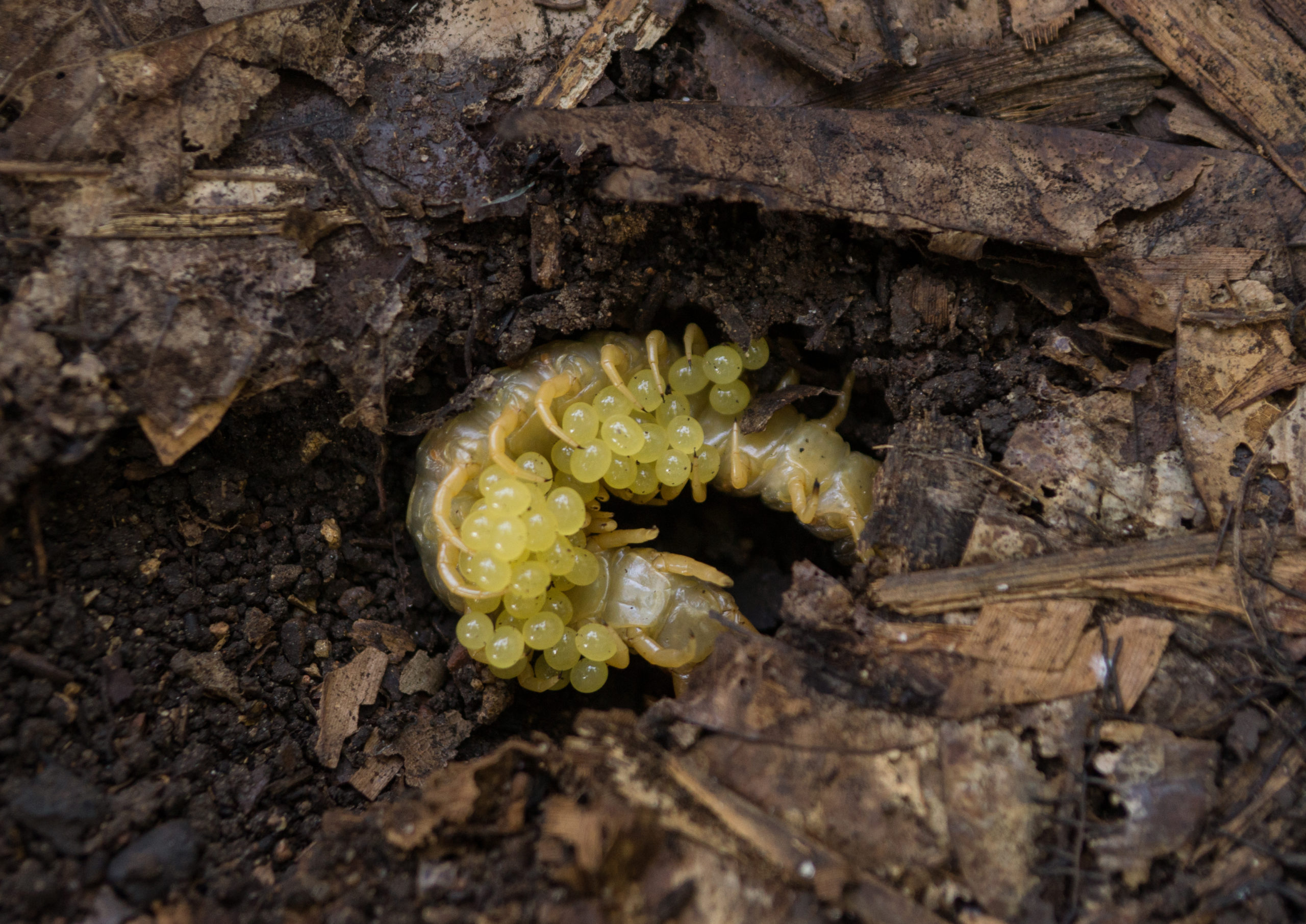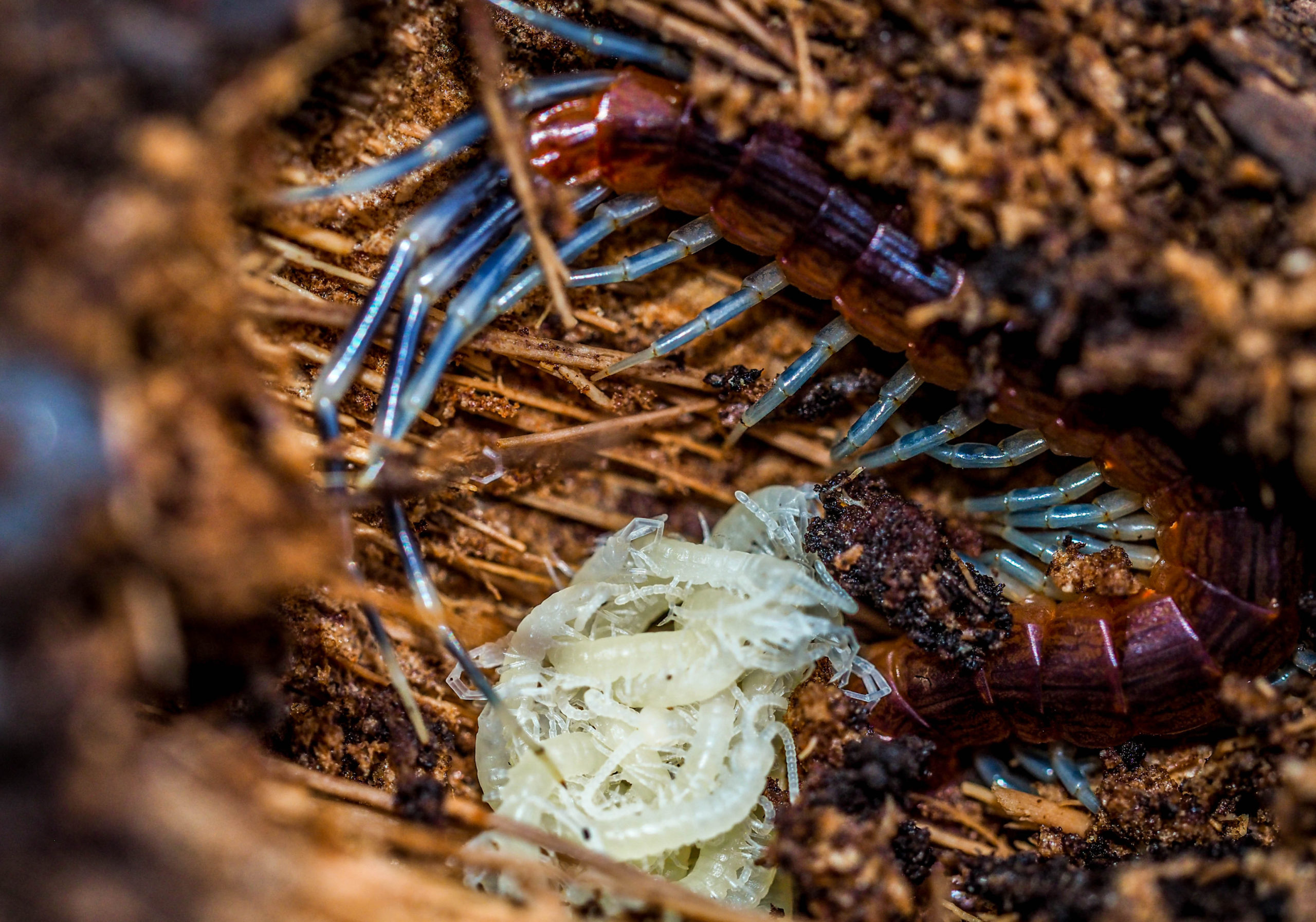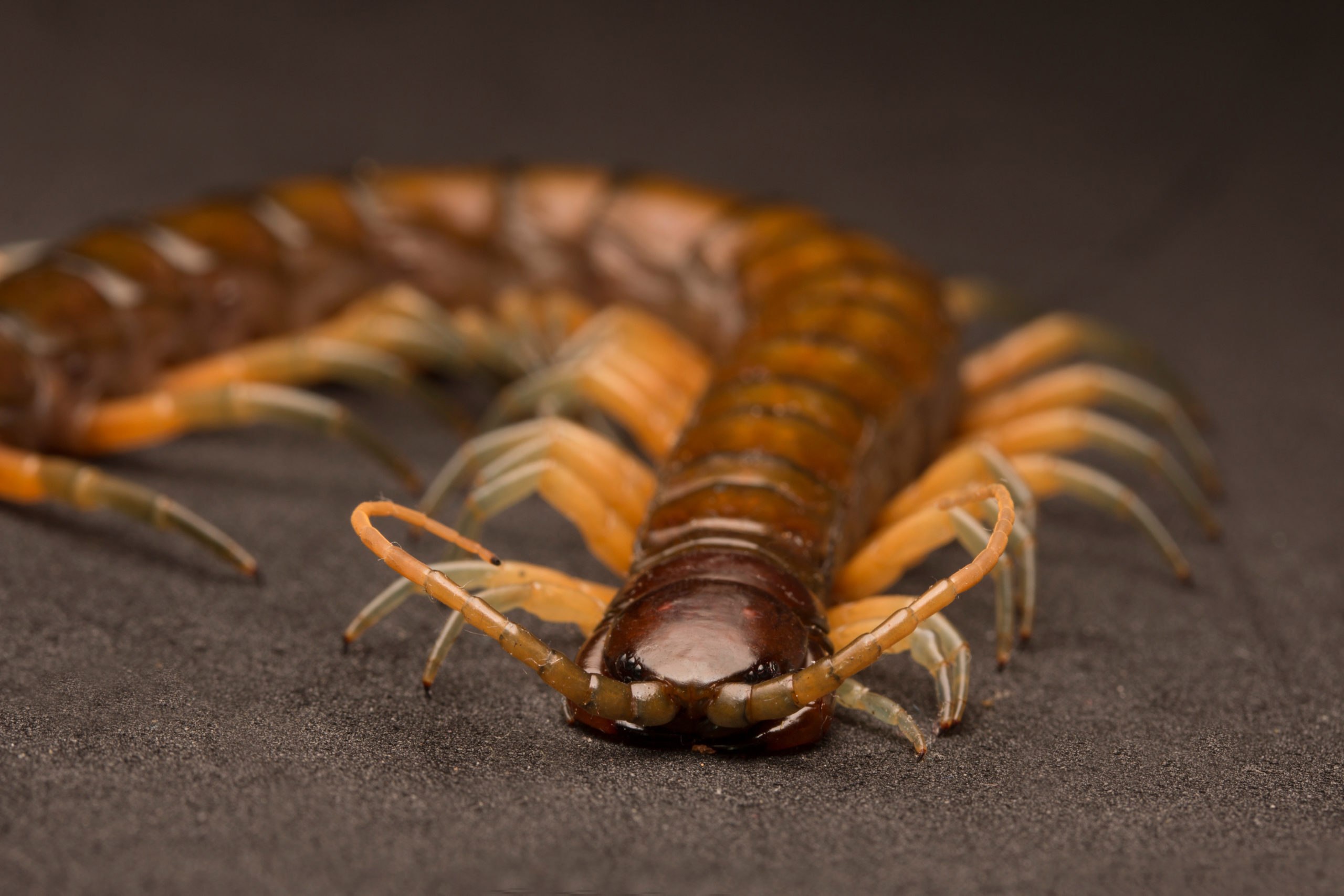Life Cycles of Centipedes
Life Cycles of Centipedes
Creepy Crawlies
Centipedes are arthropods in the subphylum Myriapoda, meaning many legs. However, counter to what their name may suggest, centipedes do not actually have 100 legs. While the range of legs on centipedes can vary drastically based on the suborder of the species, no centipede naturally has exactly 100 legs. The average ranges from 30 to 50 legs, while the highest recorded is 350 legs on the Geophilomorpha centipede. Surprisingly there isn’t clear data on the life expectancies of some subspecies of centipedes. However, in general it appears that, barring death from predators or other acts of nature, roughly 5 years of age is the typical life expectancy for centipedes. Some centipedes, like the house centipede, have even been found to survive up to 6 years. During this time, they pass through three primary life stages: eggs, nymphs, and adults.
Eggs
In the springtime, most female centipedes place their eggs in damp soil and cover them in a sticky substance. When the weather is warm, these eggs hatch into nymphs. Surprisingly, some species of centipedes give live birth to their offspring. 
Nymphs
Centipede nymphs look like mini adults and have a fairly long process of maturing into adulthood, some even lasting several years. During this time, they molt many times bringing them to a new stage in their development called instars. While many species of centipedes have their full sets of legs when they emerge as nymphs, others will emerge from each molt with more segments and legs. This is common of house centipedes, who will continue to grow legs until their death. 
Adults
Adult centipedes and millipedes are often mistaken for one another, however, the easiest way you can tell them apart is their legs. Per body segment, centipedes only have a single leg on each side while millipedes have two legs per body segment. They can often be found inhabiting basements, garden beds, under rocks, and the roots of trees. During the cold months, they seek out areas that are secluded, moist, and preferably warm where they overwinter before producing their offspring when the weather warms up once more. 
Stopping Centipedes
Centipedes prefer to inhabit moist areas and require little to no direct sunlight. Because of this, they most commonly infest basements, crawl spaces, sink cupboards, etc. To avoid centipedes from occupying these areas in and around your home, you can try implementing some of these preventative tactics:
- Keep your yard free of piles of leaves, dead foliage, grass clippings, and excess rocks
- Make sure your downspouts are properly draining and that no water is pooling around your home or garden
- Ensure that there is proper ventilation in your basement/crawl space, and attics
- Make sure that there are no leaky pipes or areas of pooling water
- Install a dehumidifier if needed and possible
- Seal any cracks and exclusions in the foundation and walls of your home
In some cases, despite these efforts, centipedes will still make their way inside. But that’s where Pointe Pest Control has got your back! Our quarterly pest control program includes the elimination of centipedes and various treatments that will create a barrier to protect your home from these creepy crawlies making their way inside again. Call us today to get rid of those multi-legged monsters for good!
Citations
Centipedes (2017) Animals Adda. Available at: https://animalsadda.com/centipedes/ (Accessed: August 18, 2021). Centipedes (no date) Pest World. The National Pest Management Association. Available at: https://www.pestworld.org/pest-guide/occasional-invaders/centipedes/ (Accessed: December 2020). Centipedes and Millipedes (2019) The University of California Statewide Integrated Pest Management Program. Available at: http://ipm.ucanr.edu/PMG/PESTNOTES/pn7472.html (Accessed: August 18, 2021). Gordon, E. (no date) A Teacher’s Resource Guide to Millipedes & Centipedes, Cornell University. Available at: https://cpb-us-e1.wpmucdn.com/blogs.cornell.edu/dist/7/3643/files/2013/09/Millipedes-CentipedesGuide-2jubwdz.pdf (Accessed: August 2020). Hadley, D. (2020) Fascinating Facts About Centipedes, ThoughtCo. Available at: https://www.thoughtco.com/fascinating-facts-about-centipedes-1968228 (Accessed: August 2020). Klass, C. and Raffensperger, E. M. (2012) Millipedes, Sowbugs and Pillbugs, and Centipedes, Insect Diagnostic Laboratory. Cornell University Department of Entomology. Available at: http://idl.entomology.cornell.edu/wp-content/uploads/Millipedes-Sowbugs-Pillbugs-Centipedes.pdf (Accessed: August 2020). Lewis, J. G. E. (2007) The Biology of Centipedes. Cambridge University Press. (Accessed: August 2020). Merchant, M. (2018) Centipede, University of Texas A&M Extension Entomology. Available at: https://extensionentomology.tamu.edu/insects/centipede/ (Accessed: August 18, 2021). Newton, B. (no date) Kentucky Centipedes, University of Kentucky Department of Entomology. Available at: https://www.uky.edu/Ag/CritterFiles/casefile/relatives/centipedes/centipede.htm (Accessed: August 18, 2021).
Request a Free Quote Today
(We do not share your data with anybody, and only use it for its intended purpose)


